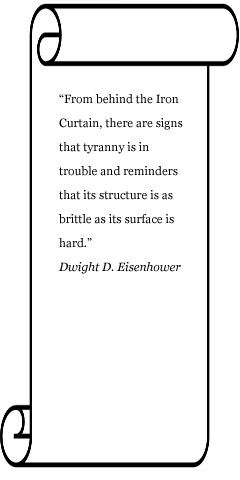| Finland, oh Finland
By Mike Bennighof, Ph.D.
October 2013
As I mentioned in the last installment, Arctic Front grew out of a very primitive variant for Panzerblitz, the ancient Avalon Hill game of armored combat on the Eastern Front. Panzerblitz was itself very primitive, and it was during construction of that Finnish variant that my thinking led me to Panzer Grenadier.
Most combat soldiers of World War II were infantrymen, just as most combat formations were infantry units. And the old Panzerblitz game gave infantry very little role, with a movement of 1 hex per turn and little ability to harm tanks. Tanks zipped around and did interesting things while the infantry sat there.
That meant that the Finnish scenarios for Panzerblitz were pretty bad — those intense fights I read about translated into units slowly marching up toward one another, one hex at a time, and then smashing into each other. The game moved more like a fight between Greek phalanxes than a World War II battle. It was intensely boring.
That frustration led directly to Panzer Grenadier's design brief of "infantry with a purpose." It would be fair to say that I designed Panzer Grenadier in order to create Finnish scenarios. Now that we have them, here's a look at 10 more of those in Arctic Front:
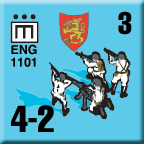 Road to Ilomantsi Road to Ilomantsi
7 December 1939
Outnumbered Finnish defenders desperately tried to halt the advancing Soviets pushing toward Ilomantsi. At the village of Mökhö, the Finnish area command ordered the line held at all costs. Waves of Soviet troops came forward after a punishing artillery barrage.
Note: This scenario uses boards from Battle of the Bulge and pieces from Eastern Front.
Conclusion
The 11th battalion fought with fanatic desperation, but the Soviets pressed forward with their own determination. After hours of savage close-quarters fighting, the Finnish battalion fell back against orders. The road to Ilomantsi lay open.
Design Note: One of the scenarios for which Panzer Grenadier was designed: Finnish speed and stealth and sisu matches up with Soviet power..
Sissi Attack
3 January 1940
Along the Raate Road from the Soviet border to the town of Suomussalmi, the Soviet 44th Motorized Rifle Division clung to a precarious hold in the face of Finnish counterattacks. Determined to wipe out the invaders, Col. Hjalmar Siilasvuo ordered an elite guerilla battalion to seize the key road junction of Eskola. Picked men of one of the world’s toughest armies, the guerillas glided silently to the attack. The noose began to tighten on the Soviets.
Note: This scenario uses boards from Battle of the Bulge and Road to Berlin, and a map and pieces from Eastern Front.
Conclusion
The Finns swept forward through the Ukranians of 44th Rifle, smashing resistance wherever it was offered. With the fall of Eskola, the Soviets had only one route leading homeward, and soon it would be threatened by the Finns. Another “motti,” or encircled Soviet position, was about to be formed.
Design Note: Panzer Grenadier does not lend itself to what some call "play balance" — the random draw of leaders alone can give one player a distinct advantage. And so for many years I placed "fairness" pretty low on the scale of scenario design priorities. Fortunately this scenario gives a fair challenge to both players.
Call me Sissi
5 January 1940
As the Finns pressed 44th Rifle Division tighter and tighter, Soviet resistance became even more desperate. The ski guerillas spearheaded the assault as the Finns tried to wipe out the trapped Soviet division. But as their position grew smaller, the Soviets were able to pack more and more men into their shorter front lines.
Note: This scenario uses a board from Battle of the Bulge and a board and pieces from Eastern Front.
Conclusion
Expecting an easy victory, the Finns found themselves caught in a furious infantry fight. Narrowing lines allowed the Soviets to pack their front with troops, restoring the fighting spirit of soldiers made fearful by the silent, dark forests. Despite repeated attacks, the Soviet lines held.
Design Note: Another war-in-the-snow scenario, this one makes for a very good contest as there are just too many Ukrainians for the Finns to ski around: they are going to have to fight them man-to-man if they want to win this.
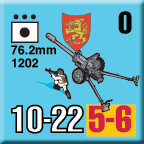 Behind the Lines Behind the Lines
2 August 1942
While the Karelian forests allowed Finnish troops to move undetected for long distances, they gave the same benefits to Soviet partisans. The Finns recruited "tribal" units to suppress them and moved tens of thousands of ethnic Russian inhabitants into concentration camps. The partisan movement exploded in the summer of 1942 when thousands of camp inmates starved to death. Finnish pursuers finally cornered the largest partisan unit, which included future General Secretary Yuri Andropov, near Lake Seesjärvi in East Karelia.
Note: This scenario uses boards from Battle of the Bulge, Eastern Front and Road to Berlin, pieces from Sinister Forces and a KOM piece from Eastern Front.
Conclusion
The Finns reported the 1st Partisan Brigade "wiped out," though given the nature of partisan warfare such a claim can't be substantiated. What is clear is that partisan attacks did decrease after this action. While the partisans were accused of targeting civilians, much of Karelia was subjected to bitter ethnic strife and men and women of all groups took up arms periodically against their neighbors.
Design Note: I reallywanted to include a scenario from this struggle, to make the point that the Finns might not have been Nazis, but they were unwelcome occupiers all the same. It's a good scenario, filled with hidden movement and ambushes.
The Horse Lords
14 June 1944
The Red Army's summer offensive on the Karelian Isthmus began with a massive artillery barrage by thousands of guns. The 10th Division fell apart in the worst mass panic suffered by a Finnish unit during the war, and Marshal Mannerheim moved his elite Cavalry Brigade up from the strategic reserve to help plug the gap as the Finns moved into their second line of prepared positions. The road to Viipuri had to be held while 10th Division re-formed behind the cavalry.
Note: This scenario uses boards and pieces from Eastern Front and Road to Berlin. Only use Soviet leaders from Road to Berlin.
Conclusion
Finland's cavalry considered itself an elite force, but they were not suited for modern warfare and crumbled under the effective Soviet tank-infantry combined arms assault. The horsemen fought well at first, but many panicked when outflanked by another Soviet division coming from the north. Mannerheim ordered his forces to pull back to their third and final line of prepared positions, placing Viipuri in direct danger.
Design Note: Patrik Pössi once again provided detailed information and this one hews to the strict historical accuracy I try to put in all of our scenarios. It's a fine scenario with the Soviets holding a huge edge in numbers and firepower but the Finns able to ride around and put out fires. And I like the title, one of those Viennese "we're not laughing with you" jewels.
Brothers in Arms
4 July 1944
With Viipuri fallen almost without a shot, the Soviets replied to Finnish peace feelers with a demand for unconditional surrender. Finland refused, and the Soviets began new attacks designed to break the final line of resistance. These included an assault across Viipuri Bay, where the battered Cavalry Brigade had been placed in what was assumed to be a quiet sector. It soon proved to be anything but.
Note: This scenario uses a board from Eastern Front, boards and pieces from Road to Berlin, and pieces from Edelweiss and Guadalcanal.
Conclusion
The initial Soviet landings went well, and the cavalry did not react quickly to the unexpected assault. As the Soviets began to secure their bridgehead, fresh German troops arrived on the scene — a division transferred from Estonia in exchange for a Finnish promise not to make a separate peace with the Soviets. They contained the Red Army's landing forces, and finally drove them into Viipuri Bay with a counter-attack of their own on the 10th. The cavalry was transferred to the seemingly quiet front in Eastern Karelia to recover its wits.
Design Note: Panzer Grenadier has very few amphibious-landing scenarios, and I wanted to include one here. The Soviets storm ashore, the outnumbered Finns try to hold them back until the Germans show up. It's one loaded with special rules for landings, so the fans of crunchy bits will deeply approve.
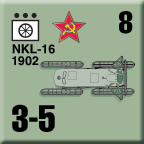 Aerosans on the Attack Aerosans on the Attack
26-27 March 1943
The period between the Finnish offensive of 1941 and Soviet attack of 1944 was marked by very limited warfare. When Lake Onega on the edge of Eastern Karelia froze over in winter time, Soviet probes came over the ice to harass the Finns. The Finns stationed a brigade along the shoreline on coastal defense duty, but the Soviets had an answer to the Finns' superior ski skills.
Note: This scenario uses boards from Road to Berlin and boards and pieces from Eastern Front.
Conclusion
A Finnish patrol found a large Soviet probe on the western lakeshore and quickly called in support. The Finns had the Soviets cornered when the powerful whine of rescuing aerosans sounded through the cold night air. The aerosans drove back the Finns and escorted the ski troops home, having inflicted serious casualties without losing any of their machines.
Design Note: Aerosans equal fun.. This is a fast-moving running night fight, with high-speed armored assault aerosans whipping around the board.
Timoshenko Strikes
11 February 1940
After months of static warfare, Soviet Marshal Semyon Timoshenko brought the Soviet forces on the Karelian Isthmus new doctrine and determination. This time, there would be a breakthrough: Assault teams backed by artillery would move forward for direct-fire support while heavy tanks neutralized Finnish bunkers so Red Army infantry could advance. It all looked good on paper.
Note: This scenario uses boards from Battle of the Bulge, boards and pieces from Eastern Front and Road to Berlin, and the German strongpoint pieces from Airborne. Only use Soviet leaders from Eastern Front.
Conclusion
Commander F. Ailabushev’s division provided the Red Army its first clear victory. The Finns left 700 dead on the battlefield just around one hilltop fortification. A Soviet paper celebrated the victory with poetry only Great Stalin could love:
The overwhelmed enemy runs
And on the concrete bunker
The Red Flag is already unfurled
The wind takes it up and outwards
Like a Flame
Forward, fighters of the 123rd!
Forward, rifles, forward!
Thus the division rolled
Like lava on the enemy
Yesterday’s flicker is today’s flame.
Design Note: This one's all about the fighting, as the maneuvering is pretty well determined by the situation.
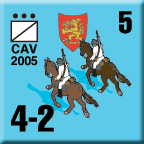 Honkaniemi Honkaniemi
26 February 1940
With the raw Finnish 23rd Division crumbling under Soviet pressure, the high command sent Col. Voldemar Oinonen to take over. Oinonen also received some of the few remaining Finnish reserves: the tough 3rd Independent Battalion and the 4th Tank Company with 13 Vickers tanks. Oinonen, sensing his command’s desperation, immediately threw the new forces into a counterattack against the Soviet salient at Naykkijärvi. Five Finnish tanks broke down on the approach march, and two more failed to start when the only Finnish tank attack of the Winter War began.
Note: This scenario uses boards from Battle of the Bulge and Road to Berlin, and pieces from Eastern Front.
Conclusion
The Finnish tanks pushed forward in front of the infantry, and met a blizzard of tank and anti-tank fire. The Soviets destroyed all of the Finnish tanks, though Corporal Seppälä’s Tank 667 knocked out two enemy T-26 tanks, and Tank 670 took out a third before it was destroyed. Finland’s first tank attack ended in dismal failure, though the forest cover allowed most of the tank crews to escape their burning vehicles. Fourth Tank Company lost one man killed, two wounded and five missing.
Design Note: The best-known Finnish tank battle of all time has been in every iteration of Arctic Front, going back three decades now to the Panzerblitz days. Finally, we have a scenario that approaches historical accuracy. Wargamer-received-wisdom holds the Finns to know no fear, but I find it hard to blame coincidence for the huge rash of tank breakdowns that occurred just as this unit was finally sent into action given that they'd been mobilized three months earlier.
Summer Fury
12 July 1941
Opening its so-called “Continuation War” against the Soviets, the Finnish 1st Jäger Brigade struck across the Tolvajärvi battlefield, so bitterly contested 18 months earlier. Adept at moving through the forest, the elite Finnish light infantry was expected to stage a breakthrough and exploit deep into the Soviet rear.
Note: This scenario uses a board from Battle of the Bulge and a board and pieces from Eastern Front.
Conclusion
The Finns swept through the forest and around the Soviet positions, forcing the Red Army to abandon many carefully constructed defensive works without a fight. But even in the first days of this new offensive the Finns learned that their enemies could exact severe casualties when forced on the defensive. The Finnish public’s expectations of a short, victorious war soon collapsed.
Design Note: The high-speed light infantry finally shows that movement I always wanted in these scenarios. This is a game of maneuver without tanks.
Don't be left out in the
cold — order Arctic
Front now! |

